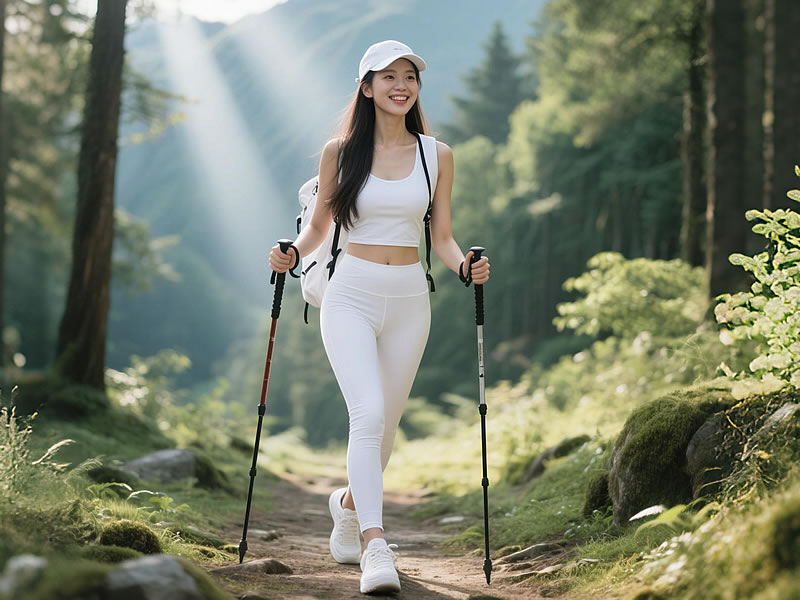Lightweight sun protection strategies for summer hikes
Summer hikes bring scorching sun and harmful UV rays, but heavy sunscreen bottles and bulky gear don’t have to weigh you down. Lightweight sun protection combines smart clothing, strategic timing, and efficient products to keep you safe and comfortable. Here’s how to shield yourself without sacrificing pack space.

1. UPF Clothing: Your First Line of Defense
Ultraviolet Protection Factor (UPF) fabrics block 98%+ of UV rays while remaining breathable and lightweight:
- Long-Sleeve Shirts: Opt for Patagonia Capilene Cool (4.5 oz) or Columbia PFG Tamiami with built-in UPF 50+. Moisture-wicking fabrics prevent overheating.
- Wide-Brim Hats: The Coolibar Adventurer Hat (3 oz) offers neck coverage and vents for airflow.
- Leggings/Shorts: REI Sahara Roll-Up Pants (7 oz) convert to shorts and provide UPF 50 protection.
Pro Tip: Dark colors absorb more UV but trap heat. Choose light-colored, loose fits for desert hikes.
2. Mineral Sunscreen: Lightweight and Reef-Safe
Chemical sunscreens can feel greasy and harm ecosystems. Mineral options with zinc oxide are safer and packable:
- Sticks for High-Risk Areas: Neutrogena Sheer Zinc Face Stick (1 oz, SPF 50) for nose, ears, and lips.
- Sprays for Quick Coverage: Sun Bum Mineral Spray (3 oz, SPF 30) for arms and legs.
- DIY Refillable Tubes: Transfer sunscreen into tiny silicone containers (0.5 oz) to save weight.
Avoid: Oxybenzone-based formulas—they degrade in heat and damage coral reefs.
3. UV-Blocking Accessories
- Sunglasses: Polarized lenses with 100% UV protection (e.g., Julbo Shield or Goodr OG). Wrap-around styles prevent peripheral glare.
- Neck Gaiters: The Buff CoolNet UV+ (1 oz) doubles as a face mask and neck shield. Soak it in water for evaporative cooling.
- Gloves: Outdoor Research Sun Gloves (1.5 oz) protect hands without compromising grip.
4. Time Your Hikes Strategically
- Early Bird/Late Owl: Hike between 5–9 AM or 4–7 PM to avoid peak UV hours (10 AM–4 PM).
- Shade Mapping: Use apps like Gaia GPS to identify shaded trails or plan rest stops under rock overhangs/trees.
- Cloud Caution: UV rays penetrate clouds—don’t skip protection on overcast days.
5. Hydration and Cooling Hacks
Sun protection isn’t just about blocking rays—it’s about managing heat:
- Electrolyte Tablets: Add Nuun Sport (0.1 oz per tab) to water for faster hydration.
- Collapsible Bottles: Hydrapak Stow 1L (2 oz) fits in pockets and reduces plastic waste.
- Cooling Towels: The Mission Enduracool Towel (1 oz) lowers skin temperature by 20–30°F when wet.
6. Ultralight Sun Protection Gear Comparison
| Item | Weight | Key Benefit |
|---|---|---|
| Buff CoolNet UV+ | 1 oz | Multi-use neck/face shield |
| Neutrogena Face Stick | 1 oz | Targeted SPF 50, no mess |
| Coolibar Hat | 3 oz | 360° shade, packable brim |
| Sun Bum Mineral Spray | 3 oz | Full-body coverage, reef-safe |
Common Mistakes to Avoid
- Skipping Reapplication: Sweat and friction erase sunscreen—reapply every 2 hours.
- Ignoring Lips/Ears: These areas burn easily. Use SPF 30+ lip balm (Sun Bum Mineral).
- Overlooking UV Reflection: Snow, sand, and water amplify UV exposure. Double protection near alpine lakes or beaches.
Budget-Friendly Alternatives
- DIY Arm Sleeves: Cut the toes off old UPF socks for lightweight arm covers.
- Bandana + Sunscreen: Soak a bandana in water and tie it around your neck.
- Baby Sunscreen: Often cheaper per ounce and gentler on skin (e.g., Blue Lizard Baby).
Science-Backed Tips
- UPF Rating: Fabric with UPF 30 blocks 96.7% UV rays; UPF 50 blocks 98%.
- UV Index: At level 6+, seek shade and cover up. Check apps like UV Lens for real-time data.
- Heat Acclimatization: Train in warm conditions pre-hike to improve sweat efficiency.
Conclusion: Lightweight Protection = Smarter Hiking
Sunburns and heat exhaustion can derail any adventure. By combining UPF clothing, mineral sunscreen, and strategic timing, you’ll stay protected without lugging heavy gear. Remember: The sun’s intensity increases 10% every 1,000 meters (3,280 ft) in elevation—plan accordingly.






